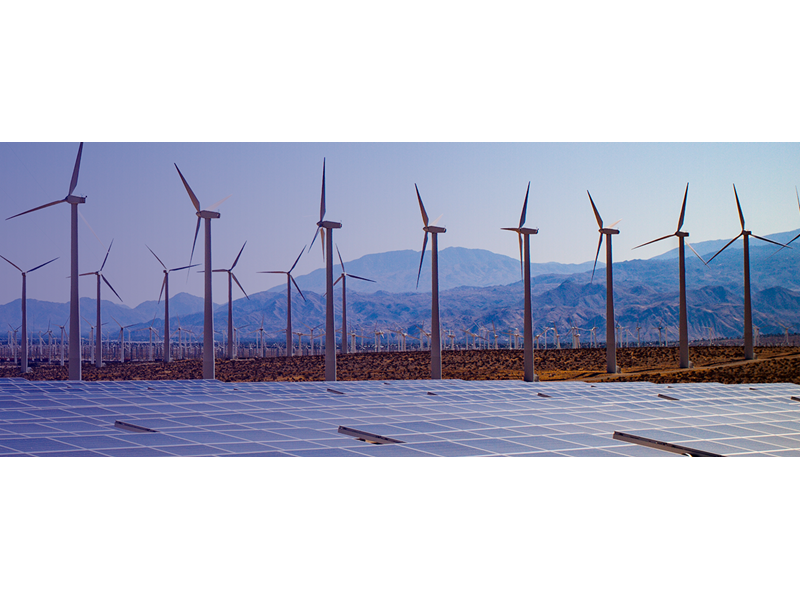Energy transition outlook: Asia Pacific
What does the path to net zero look like in world's largest market for oil, gas and coal?
4 minute read
Prakash Sharma
Vice President, Scenarios and Technologies

Prakash Sharma
Vice President, Scenarios and Technologies
Latest articles by Prakash
-
The Edge
Is net zero by 2050 at risk?
-
Opinion
Geothermal energy: the hottest low-carbon solution?
-
Opinion
Energy transition outlook: EU
-
Opinion
Energy transition outlook: Asia Pacific
-
Opinion
Energy transition outlook: Africa
-
The Edge
Diverging views on the role of gas in the energy transition
Roshna N
Research Analyst, Energy Transition

Roshna N
Research Analyst, Energy Transition
Roshna N specialises in integrated energy and emission models for Asia-Pacific and African markets.
Latest articles by Roshna
-
Opinion
Energy transition outlook: Asia Pacific
-
Opinion
Energy transition outlook: Africa
-
The Edge
How the world gets onto a 1.5 °C pathway
-
Opinion
What would it take for India to reach net zero emissions?
Jom Madan
Senior Research Analyst, Scenarios & Technologies

Jom Madan
Senior Research Analyst, Scenarios & Technologies
Jom works on scenario modelling for country and global-level energy mixes across all major energy commodities
Latest articles by Jom
-
Opinion
How the MENA region and its NOCs are diversifying into new energies
-
Opinion
Bioenergy: a US$500 billion market opportunity
-
Opinion
Energy transition outlook: Asia Pacific
-
The Edge
How the world gets onto a 1.5 °C pathway
-
The Edge
Breakthrough technologies for the energy transition
-
Opinion
Could energy recovery solve the mounting problem of global waste?
Asia Pacific’s energy transition is a mixed bag. Decarbonisation is a common theme, but the nature of the challenge is far from universal. Varying levels of wealth, hydrocarbon reserves, political realities and renewables potential have transformed the region into a kaleidoscope of unique circumstances where every technology has a role to play.
Our energy transition outlook (ETO), part of our Energy Transition Service, maps three different routes through the global energy transition with increasing levels of ambition. And our regional updates delve into the detail at country-level. The Asia Pacific report considers pathways for the nine major markets: Australia, China, India, Indonesia, Japan, South Korea, Malaysia, Thailand and Vietnam.
You can access a complimentary copy of the ETO executive summary by filling in the form at the top of this page. And read on for three key themes from the Asia Pacific outlook.
1. Energy transition versus energy trilemma is a central challenge
Asia Pacific comprises half of the world's population and contributes a third to its GDP. Its share of energy demand and emissions remains broadly unchanged at 50% and 60%, respectively, between now and 2050.
Not all countries are equally equipped to address the challenge of energy mix transformation. The opportunities, challenges and risks associated with a more orderly energy transition are not distributed evenly in the region. Affluent, energy-secure nations such as Australia face very different issues than affluent energy-exposed nations, such as Japan and South Korea, or large coal-dependent economies like China, India and Indonesia. And it’s certainly a different challenge for developing economies, such as Thailand and Vietnam.
Balancing the energy trilemma of security, sustainability and affordability is a complex issue. But it is clear that accelerated electrification is key to net zero ambitions. In our base case scenario the share of electricity in Asia Pacific’s final energy demand rises from 23% to 39% by 2050. In our country pledges scenario, it’s 49.5%. And in our net zero by 2050 scenario, it rises to 59.5%.
Low-carbon supply accounts for 35% of power generation today. In our base case, we project this will rise to 75% by 2050, while the share of wind and solar increases to over 54%.
The full ETO, available via our Energy Transition Service, takes a closer look at the energy mix by scenario. Fill in the form at the top of the page to access the executive summary.
2. New technologies and business models will be key to Asia Pacific’s energy transition
Adoption of energy transition tech will be transformational. For instance, in our base case Asia Pacific electric vehicle (EV) stock rises from 24 million cars today to 635 million units by 2050. An additional 30% growth in stock is projected in the country pledges scenario and 60% in the net zero by 2050 scenario. Lithium demand is projected to double by 2030 in our base case and triple in our net zero scenario. Demand for nickel, copper cobalt is also expected to surge.
And the hydrogen era is coming. Low-carbon hydrogen reaches 3.5% of final energy demand by 2050 in our base case. In a net zero scenario it’s 12%, pushing out fossil fuels in chemicals, steel, cement and heavy-duty mobility.
Meanwhile, new business models unlock capital flows, while capacity payments for flexible thermal power and incentives for CCUS and hydrogen projects help cover technology and market risks.
There will be challenges to overcome. The regulatory landscape for new technologies in Asia Pacific is less favourable than that of Europe or North America. Prioritising economic growth over decarbonisation, coupled with public funding limitations, is a key obstacle.
3. Decarbonisation policies vary across the Asia Pacific region – expanding domestic supply chains is a common theme
Nearly 85% of primary energy in Asia Pacific comes from fossil fuels, and a large part of it is imported due to a lack of commercial reserves. Historically, refinery and petrochemical plants have helped with transport fuel price risks. Gradually, the focus on supply security and climate change has led to energy policies being built around electrification and renewables.
China, for instance, is doubling down on renewables to peak emissions before 2030. India aims to ramp up renewables to 500 GW by 2030. Japan and Korea have set out hydrogen roadmaps to fulfil their net zero ambitions. And Australia aims to harness solar and wind power to decarbonise its energy exports.
Across the region, while policymaking will vary from direct taxation to incentives, expanding domestic supply chains is a common theme. In Australia, for instance, heavy dependence on solar photovoltaic (PV) imports is adversely impacting supply security. Realising ambitious solar capacity addition targets will depend on expanding domestic PV supply chains.
Nonetheless, by 2050, Australia is poised to lead the Asia Pacific region in renewable energy generation, with a share of more than 80% in all ETO scenarios as well as a dominant exporter of hydrogen and its derivatives.
The full ETO report delves deeper into key themes, including:
- How many markets will reach net zero emissions by 2050?
- When can we expect peak fossil fuels to arrive in Asia Pacific?
- What are the opportunities for hydrogen, CCUS, bioenergy, geothermal and SMR nuclear?
- Country-level spotlights for Australia, China, India, Japan, South Korea, Indonesia, Malaysia, Thailand, Vietnam.
Fill in the form at the top of the page for a complimentary copy of the ETO executive summary.

2024 APAC Energy & Natural Resources Summit
9 May 2024 | Marina Bay Sands, Singapore
Book your tickets now


